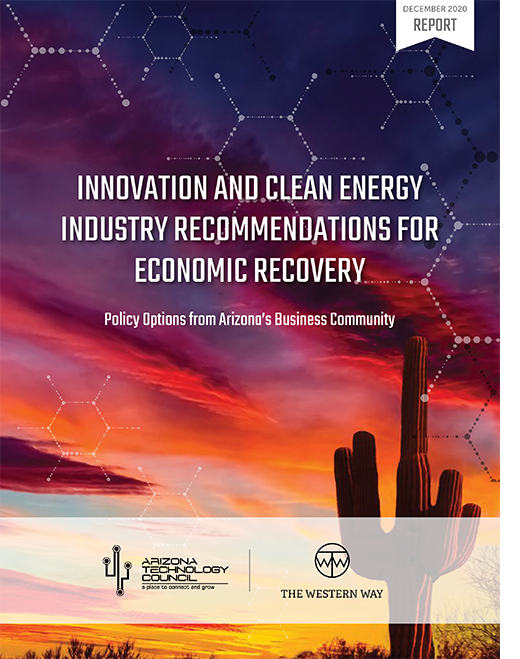Clean Energy

Innovation + Clean Energy: A Powerful Solution for Economic Recovery
Arizona is emerging as a national leader in technology and innovation, including the development and adoption of clean and renewable energy solutions. As we look ahead to the state’s post-COVID economic recovery, the clean energy sector has the potential to play a significant role.
With that in mind, The Western Way and Arizona Technology Council partnered to convene a stakeholder process bringing together Arizona business leaders to generate ideas and recommendations for incorporating the clean energy and innovation sectors into our state’s economic recovery plan.
Clean energy is the answer to moving toward a prosperous and healthy future, as well as a powerful solution to restoring economic security at a time when Arizonans need it most. The time to invest in innovation and clean energy is now.
Business Support for Increased Clean Energy, Renewable Energy and Energy-Efficiency Standards
An open letter to the Arizona Corporation Commission expressing support for strong, enforceable clean energy standards in Arizona: As major businesses, trade associations, employers and large energy consumers in Arizona, a distinguished group of Arizona business and technology companies are committed to increasing the use of renewable energy and energy efficiency in the state.

